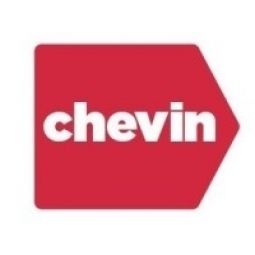Technology Category
- Functional Applications - Fleet Management Systems (FMS)
- Sensors - Utility Meters
Applicable Industries
- Equipment & Machinery
Applicable Functions
- Maintenance
- Product Research & Development
Use Cases
- Intelligent Urban Water Supply Management
- Water Utility Management
Services
- System Integration
About The Customer
DC Water is a water and sewer utility company that serves the residents of Washington DC and surrounding jurisdictions such as Maryland and Virginia. The company operates the world's largest wastewater processing plant and manages a fleet of around 635 vehicles, along with an additional 1,300 pieces of general assets. The company is committed to working smarter, not harder, and is always looking for ways to integrate innovations into its systems to better serve the public. DC Water is also in a position of public trust and is dedicated to ensuring the safety of the public and its workers.
The Challenge
DC Water, a water and sewer utility company, operates the world's largest wastewater processing plant and manages a fleet of around 635 vehicles, along with an additional 1,300 pieces of general assets. The company faces numerous challenges in managing such a large and diverse fleet. These challenges include dealing with five different unions with distinct collective bargaining agreements, managing older infrastructure, and customizing the fleet to fit the business operations. The company also strives to ensure that the right vehicles are on the road on time, the right tools are in the right hands, and that all technicians and operators are aligned with the organization's objectives. The integration of technology is crucial to overcoming these challenges, but changing the mindsets of the users to see technology as a tool for efficiency and effectiveness is equally important.
The Solution
DC Water has embraced the use of telematics and onboard technology to manage its fleet more efficiently. The company has created a testbed for several products to determine how they can be best integrated into their systems. The goal is to find solutions that are business savvy, adaptable, scalable, and provide real-time reporting for monitoring KPIs. The company also focuses on exception management and understanding its pain points to effectively use the data from these systems. Prioritizing the types of data that are important to the business, such as water main breaks and other critical points of failure or success, is a key part of this strategy. DC Water also scores its vendors based on their responsiveness to the needs of the organization and their ability to bring new ideas and innovations. The company is also exploring mobility applications and sensors for quicker and safer operations.
Operational Impact

Case Study missing?
Start adding your own!
Register with your work email and create a new case study profile for your business.
Related Case Studies.

Case Study
Smart Water Filtration Systems
Before working with Ayla Networks, Ozner was already using cloud connectivity to identify and solve water-filtration system malfunctions as well as to monitor filter cartridges for replacements.But, in June 2015, Ozner executives talked with Ayla about how the company might further improve its water systems with IoT technology. They liked what they heard from Ayla, but the executives needed to be sure that Ayla’s Agile IoT Platform provided the security and reliability Ozner required.

Case Study
IoT enabled Fleet Management with MindSphere
In view of growing competition, Gämmerler had a strong need to remain competitive via process optimization, reliability and gentle handling of printed products, even at highest press speeds. In addition, a digitalization initiative also included developing a key differentiation via data-driven services offers.

Case Study
Predictive Maintenance for Industrial Chillers
For global leaders in the industrial chiller manufacturing, reliability of the entire production process is of the utmost importance. Chillers are refrigeration systems that produce ice water to provide cooling for a process or industrial application. One of those leaders sought a way to respond to asset performance issues, even before they occur. The intelligence to guarantee maximum reliability of cooling devices is embedded (pre-alarming). A pre-alarming phase means that the cooling device still works, but symptoms may appear, telling manufacturers that a failure is likely to occur in the near future. Chillers who are not internet connected at that moment, provide little insight in this pre-alarming phase.

Case Study
Premium Appliance Producer Innovates with Internet of Everything
Sub-Zero faced the largest product launch in the company’s history:It wanted to launch 60 new products as scheduled while simultaneously opening a new “greenfield” production facility, yet still adhering to stringent quality requirements and manage issues from new supply-chain partners. A the same time, it wanted to increase staff productivity time and collaboration while reducing travel and costs.

Case Study
Integration of PLC with IoT for Bosch Rexroth
The application arises from the need to monitor and anticipate the problems of one or more machines managed by a PLC. These problems, often resulting from the accumulation over time of small discrepancies, require, when they occur, ex post technical operations maintenance.

Case Study
Data Gathering Solution for Joy Global
Joy Global's existing business processes required customers to work through an unstable legacy system to collect mass volumes of data. With inadequate processes and tools, field level analytics were not sufficient to properly inform business decisions.







